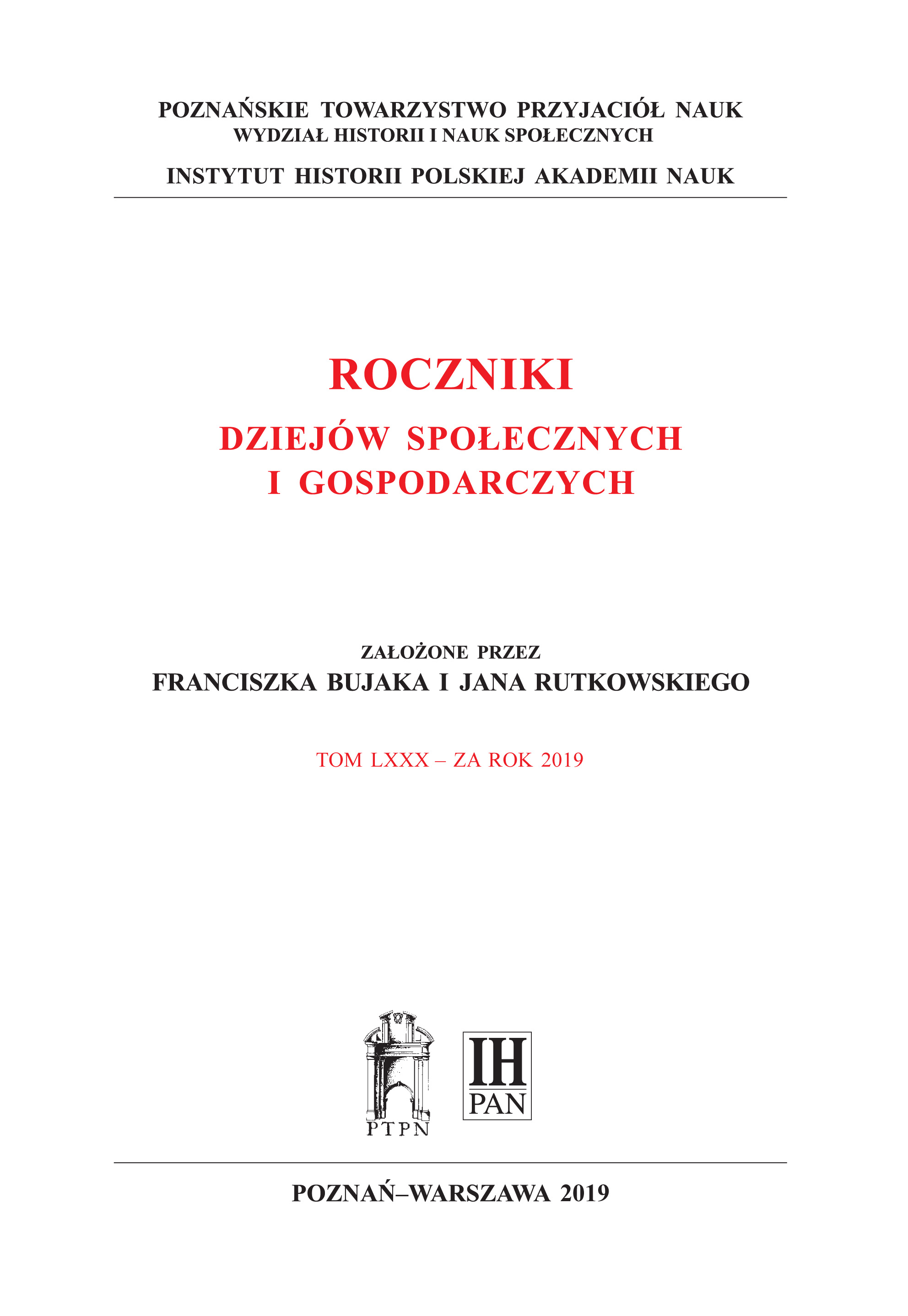Wzrost i stagnacja gospodarki chłopskiej. Przypadek starostwa chmielnickiego w XVIII w.
Growth and stagnation of peasant economy. The case of the Khmilnyk Starosty in the eighteenth century
Author(s): Adam WłodarskiSubject(s): Economic history, Social history, Economic development, 16th Century, 17th Century, 18th Century
Published by: Instytut Historii im. Tadeusza Manteuffla Polskiej Akademii Nauk
Keywords: economic history; Khmilnyk (Chmielnik, Хмільник ́ ) Starosty; Podolia; Ukraine; peasant economy; frontier; neo-Malthusianism;
Summary/Abstract: The early modern Khmilnyk (Chmielnik, Хмільник ́ ) Starosty was based on peasant economy. In the period between the sixteenth and the eighteenth century, the structure experienced two fluctuations. The earlier, taking place from the sixteenth century until the turn of the eighteenth century, was referred to as the “Tatar conjuncture,” due to the impact of the attacks of the Orda which converted the previous sudden economic growth into an exceptionally deep crisis. The second fluctuation, which occurred from the early eighteenth century to the mid-nineteenth century, came to be known as the “Malthusian conjuncture,” with dynamic economic development giving way to long-lasting stagnation resulting from the law of diminishing returns.
Journal: Roczniki Dziejów Społecznych i Gospodarczych
- Issue Year: 2019
- Issue No: 80
- Page Range: 139-186
- Page Count: 48
- Language: Polish

